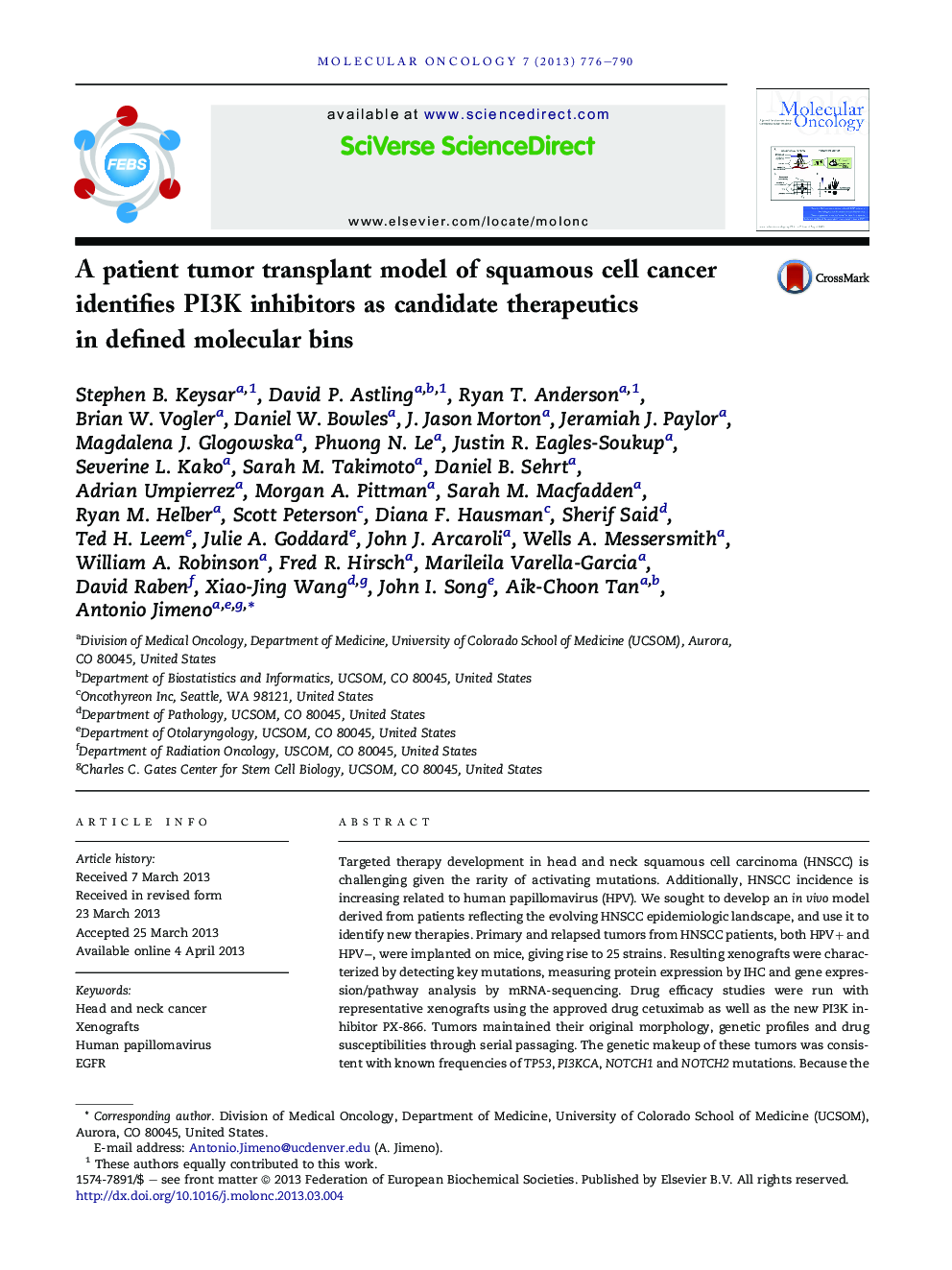| Article ID | Journal | Published Year | Pages | File Type |
|---|---|---|---|---|
| 2145769 | Molecular Oncology | 2013 | 15 Pages |
•This HNSCC xenograft model includes all clinical subtypes by location and HPV status.•Mutation profile is representative of seminal sequencing reports (Including NOTCH).•Morphology, gene expression and drug sensitivity are stable over generations.•Cases with PI3KCA alterations were sensitive to the novel PI3K inhibitor PX-866.•PI3K inhibition was effective in two cases harboring NOTCH1 mutations.
Targeted therapy development in head and neck squamous cell carcinoma (HNSCC) is challenging given the rarity of activating mutations. Additionally, HNSCC incidence is increasing related to human papillomavirus (HPV). We sought to develop an in vivo model derived from patients reflecting the evolving HNSCC epidemiologic landscape, and use it to identify new therapies. Primary and relapsed tumors from HNSCC patients, both HPV+ and HPV−, were implanted on mice, giving rise to 25 strains. Resulting xenografts were characterized by detecting key mutations, measuring protein expression by IHC and gene expression/pathway analysis by mRNA-sequencing. Drug efficacy studies were run with representative xenografts using the approved drug cetuximab as well as the new PI3K inhibitor PX-866. Tumors maintained their original morphology, genetic profiles and drug susceptibilities through serial passaging. The genetic makeup of these tumors was consistent with known frequencies of TP53, PI3KCA, NOTCH1 and NOTCH2 mutations. Because the EGFR inhibitor cetuximab is a standard HNSCC therapy, we tested its efficacy and observed a wide spectrum of efficacy. Cetuximab-resistant strains had higher PI3K/Akt pathway gene expression and protein activation than cetuximab-sensitive strains. The PI3K inhibitor PX-866 had anti-tumor efficacy in HNSCC models with PIK3CA alterations. Finally, PI3K inhibition was effective in two cases with NOTCH1 inactivating mutations. In summary, we have developed an HNSCC model covering its clinical spectrum whose major genetic alterations and susceptibility to anticancer agents represent contemporary HNSCC. This model enables to prospectively test therapeutic-oriented hypotheses leading to personalized medicine.
